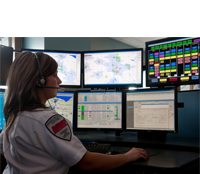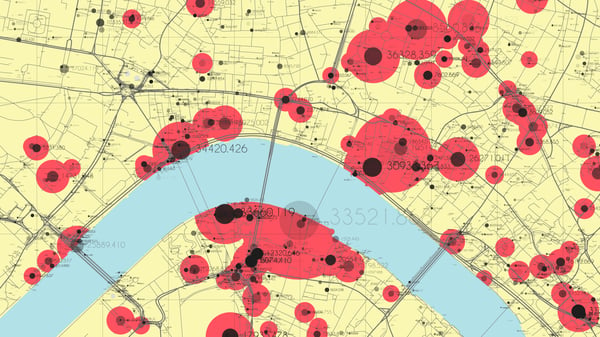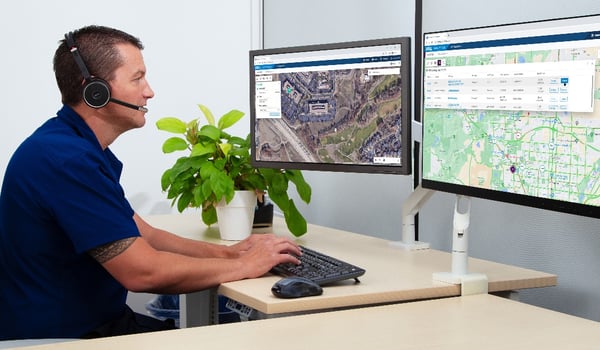4 Must-have Data Points for Dispatch-Billing Alignment and Maximum Reimbursement
How Data is Driving Care Starting at Dispatch
Not that long ago, the dispatch center was just a room located in a basement or the back of an office, staffed by a person trained (or more likely untrained) to answer a telephone and push a microphone button, with a data set generally gathered on a paper log with a pencil
Was this information valuable?

Not that long ago, the dispatch center was just a room located in a basement or the back of an office, staffed by a person trained (or more likely untrained) to answer a telephone and push a microphone button, with a data set generally gathered on a paper log with a pencil. Times have changed.
Look no further than the chain of survival to understand the importance of today’s dispatch center. Immediate activation of response agencies, early CPR, rapid defibrillation, and early and effective ALS initiation all emphasize the need for minimizing time and accurate decision making. The success of each of these important components is directly impacted by trained dispatchers and the technological tools at their disposal.
Now, with responsibilities that include protocols for “hear and treat” and “see and treat” and interfacing on a regular basis with the other components of the healthcare community, the dispatch center is swiftly transitioning into a clinical hub. To be effective and efficient in this role, accurate data is needed —because data drives outcomes. Let’s take a look at the diverse data sources and the uses of data in this new world.
Initial Answering Point – Lost Data is a Lost Opportunity
The first point of accurate data on any emergency that can be captured is when outside communications are received at the initial answering point. However, response time in most systems starts when the call is received at the EMS dispatch center. I mention this now because lost data is a lost opportunity.
As the first link in the chain of survival, obtaining immediate activation data is vital for analytical purposes. Ironically, technology may not be the limiting factor because these centers often employ sophisticated computer aided dispatch (CAD) hardware and software programs. Rather, there seems to be a reticence by many initial answering points to provide that data because of the concern that it will disclose a significant delay in call processing. This data becomes increasingly important, as the focus on response times transitions from outputs where arbitrary response times are measured and outliers penalized to clinically significant, evidence-supported outcomes.
I hope most people will agree that it is better to over respond to the patient not in respiratory distress than to under respond to the patient who was actually breathing agonally and is found to be in cardiac arrest.
After capturing the address of the emergency and the call-back number, the Emergency Medical Dispatcher (EMD) starts the clinical assessment of the patient in a matter of seconds. Similar to the paramedic’s field protocols, the protocols used by the EMD are medically approved and founded in clinical evidence. They require the EMD to interrogate the caller for the patient’s general problem, and then ask further specific systematized questions to determine the acuity level of the patient and the proper system response needed. This is all driven by data.
Without a doubt, every EMT and paramedic has responded to a shortness of breath call with red lights and siren, only to arrive and find a non-acute patient breathing relatively normally. That can lead them to question the reliability of data if in fact, dispatch protocols are so data-driven. It’s an interesting question with an explainable answer. The Medical Priority Dispatch System (MPDS) is the most widely used protocol. It’s also the most studied and has a large evidence base to support its clinical foundation. Everything MPDS does is based on data.
MPDS is designed to over triage patients because the EMD isn’t actually with the patient and can’t see the patient. This will probably change as technology evolves, but for now, it’s the reality. I hope most people will agree that it is better to over respond to the patient not in respiratory distress than to under respond to the patient who was actually breathing agonally and is found to be in cardiac arrest.
Published peer-reviewed evidence shows that the MPDS process does work. Each action of the EMD is captured as a data point within the MPDS software, resulting in the assignment of a patient condition, or “determinants.” Currently, there are more than 300 determinants in the system. After the MPDS system was introduced at the London Ambulance Service, it showed a 200 percent increase in the identification of cardiac arrest over the next three years. Similar studies have shown the accurate identification of chest pain, seizure and stroke patients.
Accurately Triage Calls with a Structured Dispatch Control System
Equally important for EMS systems today is the use of data by the EMD to identify the non-acute patient. This isn’t only feasible using a structured dispatch control system, but peer-reviewed research has proven that it can be done — and is safe. In fact, in one study it was found that 99 percent of the calls triaged as “alpha,” the lowest acuity category, didn’t meet any higher acuity criteria.
This data is extremely important for the dispatch center. Accurate triage saves valuable ALS resources for the critical call and accurate triage of these calls by the EMD can provide that caller with better, more appropriate resources outside the traditional 911 system.
This type of dispatch system is also a key for community paramedicine. Without data driving the process, the community paramedic wouldn’t be as successful as they are now. With the rapid spread of community paramedicine to the United States, it’s imperative that the dispatch system, and clinical hub concept, be founded on call taking data, and that data be clean, unbiased and accurate.
Software-Driven CAD Leads to Limitless Opportunities
With a plethora of CAD systems and software applications, the opportunity for care to be driven by data simultaneously, and in a predictive manner, is almost limitless. Many communications centers use software to monitor operational indicators such as dispatcher call-processing times to provide 911 center supervisors and dispatchers with real-time feedback. Information captured by a dispatcher or call taker and entered into the CAD can be monitored automatically in real time.
Understanding the possibilities is a first step, beginning when the 911 call is received. With the appropriate interface, both the address and the telephone number automatically populate the call-taker’s screen. Within 30 seconds, the call-taker uses MPDS to process the call as life-threatening and, using another interface, transfers the data to the CAD, which then automatically populates the dispatch software.
At this point, based on available software applications and real-time data, the dispatcher’s decision becomes one based on education rather than assumption. Many EMS systems use Automatic Vehicle Location (AVL) software that continually transmits vehicle location and availability to the dispatch center using another interface. At a glance, the dispatcher knows the options. Other programs, specifically mapping, also may be available to show coverage, or lack of coverage, the best route for the vehicle, any obstacles that might be encountered (think bridges, trains, road work) and, based on time of day, traffic.
The decision is made and the rest is a push of the button. The crew is notified, the time automatically stamped, and even the route automatically recorded. Another push of the button by the crew on arrival at the scene and an accurate response time is recorded. Dispatch then looks at the real-time map again, determines both the location of the coverage gaps and the likelihood of where the next life-threatening emergency will occur, and moves the remaining available units. These actions only take seconds, and the coverage plan remains optimized.
Operationally, the collection of data like this quickly opens new doors for supervisors and managers. Every aspect of the operation can be monitored and performance measured. Although it’s true that the focus of data collection can be on the individual dispatcher, in a performance-based EMS agency, the collection and use of data is best served when it’s used to make system analysis easier and system changes faster. Understanding the complex nature of a dispatch center and the most overwhelming responsibilities involved with the data are inextricably linked to better clinical care.
Clinically, real-time dispatch center data saves lives. Using mapping, or GIS, the locations of past cardiac arrests can be plotted along with the time of day and response times. This leads to interfacing with coverage maps, AVL and the ultimate timely response. Although evidence has proven that the eight minute response time standard is arbitrary, the same evidence shows that interventions at the four to five minute mark after a cardiac arrest markedly improve survival. This saves lives.
In addition, by combining the MPDS system with dispatch notes, medical directors and clinical supervisors can be automatically notified of specific clinical events, including cardiac arrests, chest pain or high-risk pregnancy. Combining this dispatch data with the data collected on board the unit, such as 12-lead EKG or specific PCR documentation can create quick and effective quality improvement loops.
With the changes in dispatch technology over the past 15 years, one can only speculate about the future. Whatever the direction, the concept of the chain of survival and the need for speed will remain as new methodologies, medications and techniques are discovered. For these new elements to reach the patient, the dispatch clinician will need the best data available to initiate all links in the chain. It all starts with dispatch.
*The full version of this article originally ran in Data Drives Care, an editorial supplement to JEMS.
Related Posts
How EMS Agencies Can Reframe Need and Refocus Resources With Geospatial Analytics
How To Minimize Radio Chatter and Reduce Guesswork With Smarter Dispatch Resource Management
ZOLL Pulse Blog
Subscribe to our blog and receive quality content that makes your job as an EMS & fire, hospital, or AR professional easier.
ZOLL Pulse Blog
Subscribe to our blog and receive quality content that makes your job as an EMS, fire, hospital, or AR professional easier.




